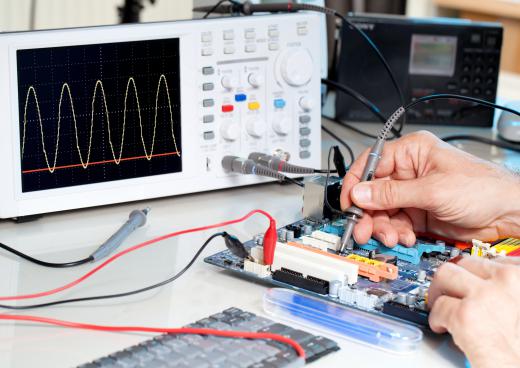An eddy current inspection is a materials testing process that relies on electromagnetic waves rather than physical or mechanical testing methods. These inspections are used on a wide variety of products, ranging from aircraft to machinery. Eddy current inspections are also widely used in the construction industry to test materials like steel and other metals. This testing process may also be known as a Foucault current test or inspection.
During an eddy current inspection, a coil made of some type of conductive material, such as copper, is placed near the object that will be tested. A current is passed through the coil, which creates an electromagnetic field. This electromagnetic field causes a similar, opposing field, known as an eddy current, to take place in the object being tested. The currents are then measured using eddy current inspection equipment, typically a portable oscilloscope. Any distortions or irregularities in the currents indicate flaws or cracks within the test object.

This test method is frequently used to find flaws, cracks, or welding errors in steel or other metal objects. An eddy current inspection can also be used to measure the thickness of a coating or finish on a metal object, or even to determine what material the object is made from. For instance, electromagnetic waves will move at a certain speed when passing through steel, but may move differently when passing through copper or brass. This test can help determine what type of metal the object is made from without removing its finish.
Eddy current inspections offer a number of advantages over other test methods. The primary benefit is their non-destructive and non-invasive nature. This means that the object can be tested without damage or destruction, and can typically be tested with no physical contact at all. An eddy current inspection is relatively quick and easy to perform, and the equipment used during these tests is portable and easy to operate.
There are also a number of potential drawbacks that should be considered before performing an eddy current inspection. First, this test can only be used on conductive materials, so it will be ineffective on most non-metallic objects. Some finish materials can skew the results of this inspection, and the best results can be found on non-coated objects. Finally, eddy current tests may not be able to detect flaws or cracks deep within an object, and are better for detecting surface cracks.
